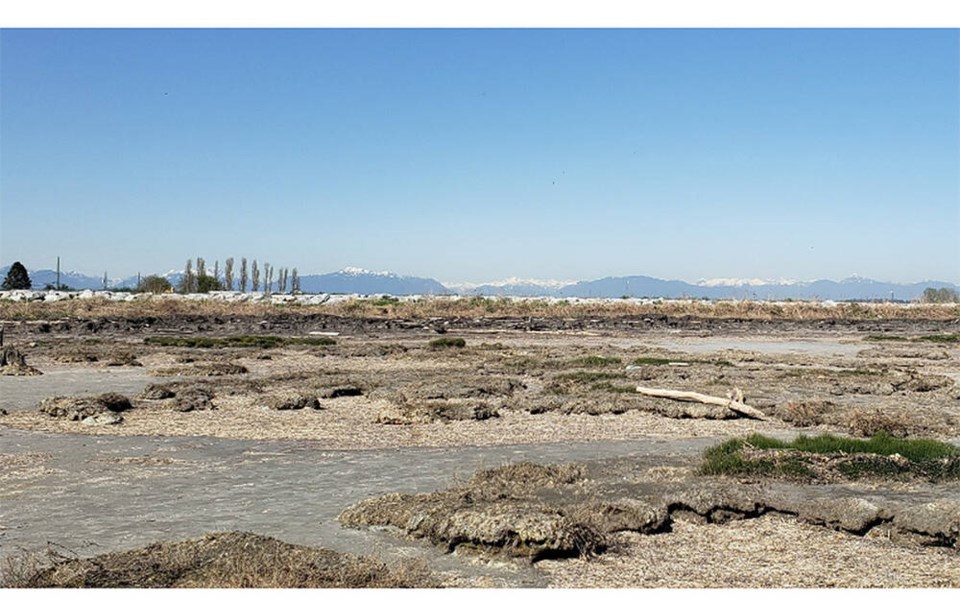It’s an innovative idea to provide flood protection in the City of Delta.
Currently waiting for final regulatory approvals, the city is planning a pilot project known as a “Living Dike”, a nature-based solution to combat climate change and sea level rise.
Also called the Boundary Bay Foreshore Enhancement Project, the project would “establish a gentle, raised slope of sediment with vegetation placed on the seaward face of a traditional dike, mimicking the natural salt marsh and mudflats along Boundary Bay. There are many parts of Boundary Bay that have a natural salt marsh and this pilot project intends to expand those areas.
The 250-linear-metre section of raised salt marsh would be built at the foreshore along Boundary Bay near 96th Street.
The salt marsh may be able to absorb wave energy reducing the overall wave height that will assist in reducing the dike design elevation and possibly lengthen the timelines for dike raising activities, according to the engineering department.
The city notes, “It can also improve the overall dike stability with its ability to protect the traditional dike from coastal erosion. The unique habitat benefits of salt marshes, mudflats, and eelgrass beds are an important part of the estuary ecosystem that supports migratory birds and marine life.”
The project is being undertaken in partnership with the City of Surrey and Semiahmoo First Nation. There are two pilot study areas that are evolving into field study projects along Boundary Bay, the city notes, adding the project is funded by the Federal Government under the Disaster Mitigation and Adaptation Fund.
Surrey is leading the design and construction of the initiative in coordination with Delta staff.
Surrey’s project is located along the shoreline west of Mud Bay Park, south of Highway 99, and will extend approximately 790 metres along the foreshore.
Once completed, a monitoring period begins for at least a period of three years.



